Tibet to Nepal
4WD Expedition
via the Base Camp of Mt. Everest
Highlights:
* Stay at the Mt. Everest base camp, where you
will get up close and personal with Mt. Everest, the world*s
tallest mountain
* Visit the holy shrines and temples of Tibetan Buddhism in
Lhasa, the capital of the Tibetan Autonomous Region, as well as
others across Tibet
* You will have the opportunity to do some in-depth exploring
around the Tibetan Plateau, known as the *rooftop of the world*
and a region that has captured the hearts and minds of people
around the world
* Take some time to tour Kathmandu, the capital of Nepal and one
of the world*s most fascinating and mysterious cities. It also
is an important center in the practice of Tibetan Buddhism
AVAILABLE MAY 10 THROUGH OCTOBER 10.
Day 1 arrive in
Lhasa
You will fly to Gongga airport and arrive in Lhasa, the
capital of the Tibet Autonomous Region (the altitude is
3680m). Upon arrival you*ll be met by your English-speaking
guide, and you*ll be driven into the city, which takes about
1.5 hours. After lunch, we recommend that you rest and take
it easy the rest of the day in order to get our body
acclimated to the sharp change in altitude and environment.
You will spend the night in the Lhasa Hotel, or in
accommodation of similar repute.
Day 2 Lhasa (B, L, D)
Today will be a full day of touring the best sights in Lhasa.
After breakfast, we will go to the Potala Palace, which is the
most renowned highlight of Lhasa. The world famous Potala Palace
is located on Moburi (Red) Mountain, to the west of old Lhasa.
It is a huge treasure house of materials and articles from
Tibetan history, religion, culture and art. The palace is widely
known for the precious sculptures, murals, scriptures, Buddha
statues, murals, antiques, and religious jewelry housed within.
They are of great cultural and artistic value. In 1994, the
Potala Palace was declared a UNESCO World Cultural Heritage
Site. It was originally built in the 640s, during the reign of
King Songtsan Gampo of Tibet. The Potala has been a sacred place
for hundreds of years. Thousands of pilgrims from Tibet, other
parts of China and abroad come every year to pay homage. Their
devotion is shown by the difficult journeys they have to make to
reach *the City of the Gods".
Our next stop will be at the Jokhnag Temple. Located in the
center of old Lhasa city, Jokhang Monastery is the prime seat of
the Gelugpa (Yellow) Branch of Tibetan Buddhism. It was
originally built in 647 AD. It is said the site was chosen
personally by the wife of King Songtsan Gampo, the Tang Princess
Wen Cheng. The princess perceived Wutang, a lake in Lhasa, to be
a *devil*s heart*, a source of evil, and had it filled in and
the temple built on the site to counteract evil forces. It was
built by craftsmen from Tibet, China and Nepal and thus features
different architectural styles. Jokhang means "House of Buddha".
Jokhang Temple is the spiritual center of Tibet and the holiest
destination for all Tibetan Buddhist pilgrims.
A short walk from the Jokhang Temple is Barkhor Street. The
Barkhor (pilgrims* circuit) is found in the heart of Lhasa
encircling the Jokhang Temple. It is the earliest remaining
street in Lhasa. It bustles with activity and is always
jam-packed with traders and hawkers. It is a "must" for
souvenir-hunting tourists. Many people call the Barkhor "the
window of Tibet" as it exhibits a typical Tibetan life. The old
circumambulation circuit is always crowded with pilgrims from
everywhere. Some are monks, and some are businessmen from Kham,
a region encompassing East Tibet and part of Sichuan Province.
Here you will find people from all over Tibet. You can
experience different styles of dress and languages. Even the
similar-looking clothes of the monks vary depending on the
different branches of Buddhism they practice.
The rest of your evening can be spent further exploring the old
city center of Lhasa, and your night will be spent at the same
hotel as before.
Day 3 Lhasa (B, L, D)
Today will be our second day further exploring Lhasa, a city
that has captured the hearts and imaginations of adventurers and
dreamers all over the world. Our first stop will be at the Sera
Monastery, the last of the three principal Gelupka, or Yellow
Hat, Buddhist monasteries to be built in Lhasa. Sera has been
listed as one of the China's National Cultural Relics since
1982. Sera comprises a great sutra chanting hall, a college and
32 sections. It once housed nearly 10,000 monks, and is proud of
its glorious history during the Ming Dynasty (1368-1644). Sera
means hailstone in Tibetan, and legend tells that it hailed
during the foundation of this famous monastery.
Next will head on over the Drepung Monastery. Built in 1416,
Drepung Monastery is the first of the three principle
monasteries of the Gelugpa School of Buddhism. Gelugpa, or
Yellow Hat, Buddhism is the branch followed by most Tibetans,
and the most influential figure in this faith is the Dalai Lama.
Drepung Monastery used to be the living quarters of Dalai Lamas
before the reconstruction of the Potala Palace by the Fifth
Dalai Lama between 1645 and 1694. Drepung was listed as a
national cultural relic in 1982.
In the afternoon we will get to visit Norbulingka, Tibet*s
Summer Palace. Norbulingka was built in 1755 and became the
place where the successors of the seventh Dalai Lama dealt with
affairs, held celebrations, spent the hot season, rested and
conducted religious activities. In mid-March every year, the
Dalai Lama would move here from the Potala Palace, and stay
until the end of October, when he would return to the Potala
Palace. So, Norbulingka is called the Summer Palace and the
Potala Palace the Winter Palace. The garden covers an area of 46
acres (19 hectares) and the palace has 370 rooms of different
sizes. In the garden visitors can worship Buddha, relax and
study the Tibetan-style palaces.
You will spend your final night in the same hotel as the
previous two nights.
Day 4 Lhasa-Shigatse (by Jeep, 380km/236miles of
driving) (B, L, D)
After breakfast in the morning we will travel by vehicle to
Shigatse. The journey to Shigatse enters through high mountain
passes and along the beautiful shorelines of Yamdrok Tso Lake.
Along the way, we will visit some traditional Tibetan villages.
We will stop at Gyangze to visit the Gyangze Dzong, a fortress
where 300 Tibetan put up a fight against invading British-Indian
troops in 1904. If we have enough time, we will also visit the
Gyangze Kumbum for its stunning architecture and murals from the
15th century. We will then resume our journey to Shigatse, and
we should arrive by early evening.
We will stay at the Shigatse Hotel, having dinner there, and you
are free to spend the night at your own leisure.
Day 5 Shigatse-Tingri (Shegar) (by jeep,
310km/192.6miles, 6 hours of driving) (B, L, D)
After breakfast in the hotel we will drive from to Lhaze in
order to visit the Sakya Monastery. Tshilunpo Monastery is
located on the southern slope of the Nyima Mountain to the west
of the Shigatse city. It represents the Tibetan super
architecture art in the Last Tibetan spirit. The monastery
attracts thousands of Buddhists and tourists from domestic and
abroad to travel and worship every year. Driving on the road far
away from Shigatse, from the west city you can see the gold roof
of Tashilunpo Monastery shinning under the sunshine.
Experiencing five centuries, it still maintains the magnificent
vigor. Tashilhunpo Monastery (meaning auspicious) is one of the
Six Big Monasteries of Gelugpa (or Yellow Hat Sect) in China and
the biggest Tibetan Gelugpa Buddhism monastery in back Tibet
area. Also called the Heap of Glory, the monastery is located at
the foot of Drolmari (Tara's Mountain), Shigatse.
We will then make the drive to Tingri, which is known for its
spectacular views of Mount Everest, Mount Lhotse and Mount
Makalu which lie around in what is the highest mountain group in
the world. Tingri used to be an important trading post where
Sherpas from Nepal exchanged rice, grain and iron for Tibetan
wool. livestock and salt. It gives its name to the broad upland
basin more than 4,500 meters high that is known as the Tingri
Plain.
For the night we will stay at the Zhufeng Hotel, and dinner will
be of the local cuisine.
Day 6 Tingri-Qomolangma Base Camp (3 hours by jeep,
90km/56miles) (B, L, D)
We will drive to the Qomolangma (known around the world as Mt.
Everest) base camp, and on the way we will stop at the Rongbuk
Monastery. The monastery was built in 1899, as a Nyingmapa
monastery since it was said that once Padmasambhava, founder of
Nyingmapa, preceded his religious cultivation here. The
monastery destroyed in the Cultural Revolution, having 8
sub-monasteries including a nunnery, is gradually restored. It
houses Lamas and nuns in the same monastery. Sakyamuni and
Padmasambhava are enshrined in the small temple. Pilgrims trek a
long way to pay votive offerings or see lamas playing operas
during big Buddhist days.
The base camp is a series of campsites used by mountain climbers
and adventurers when climbing Mt. Everest via the northeast
ridge. The clear vistas to the star North Peak of Mt. Everest
offered at the Everest Base Camp are far superior to those in
neighboring Nepal. Like the would-be conquerors of Everest, we
will stay in a tent at the campsite. The tent you will stay in
offers the most comfortable and warmest bedding at the site,
thanks to the heat from the yak dung stoves! Simple meals, and
even canned beer, are offered inside the tent.
Day 7 Qomolangma Base Camp-Zhangmu (B, L, D)
After watching the sunrise over Mt. Everest, and taking in
breakfast we will begin our drive to Zhangmu. While most of this
day will be spent in the jeep, the scenery outside will keep you
more than occupied. Mountains, peaks, ice lakes, and local
villages will dot the landscape as we roll on to Zhangmu.
Zhangmu is a customs town and a point of entry on the
Nepal-Tibet border, just uphill and across the Bhote Kosi River
from the Nepalese town of Kodari. At 2300 meters above sea
level, Zhangmu has a mild and humind subtropical climate, highly
unusual for Tibet. The Friendship Highway, the celebrated
highway route in the Tibetan Plateau, runs through Zhangmu. For
the night we will stay in the Zhangmu hotel, with dinner being a
sampling of the local cuisine.
Day 8 Zhangmu-Friendship Highway-Kathmandu (B, L, D)
After having breakfast in the hotel, we will hit the road on the
legendary Friendship Highway in order to reach Kathamndu, the
capital of Nepal. The Friendship Highway is a celebrated route
in the Tibetan Plateau, renowned for its scenic wonders
The highway itself starts (as part of China National Highway
318) from Lhasa, the capital of the Tibet Autonomous Region,
passing the turquoise Yamdrok Lake, before connecting to
Shigatse, the home of the Panchen Lama, via Gyantse. Farther
west, at Lhaz*, the road forks, with one branch continuing west
as China National Highway 219 to the city of Ali (Gar) in
western Tibet. The other branch (maintaining the Hwy 318 number)
continues southwest and then south, past Shegar, New Shegar, and
to Rongphu Monastery near Everest Base Camp. From here the road
continues on to Zhangmu, the Friendship Bridge at the Nepali
border. The road on the Nepalese side of the border, to
Kathmandu, is known in Nepal as Arniko Rajmarg.
The scenery on the highway features inspired vistas of the
snow-capped Himalayas, vast grasslands and meadows, and other
unforgettable sights. The road is also important to pilgrims who
make their way from all around Tibet to the spiritual center in
Lhasa.
At the border to Nepal, you will meet your new guide, and you
will drive on to Kathmandu. You will stay in a 5 star hotel in
the city, and the rest of the evening can be spent at your own
leisure. You may wander among the local markets and bazaars,
while taking in the local street performances if you desire.
Day 9 Kathamndu (B, L, D)
Today we will spend our time touring the best sites in Kathmandu
and the surrounding areas. Following breakfast we will first
head to Pashupatinath Temple. Pasupatinath ,with an area of 281
hectares is considered one of the holiest shrines of all the
Hindu temples. The temple has remained the presiding deity of
ruling Nepalese Royalty. Located on the banks of the Bagmati
River, this two tiered magnificent golden temple with four
triple silver doorways is unique example of the Nepalese temple
architecture. It is one of the largest Hindu temple complexes in
South Asia with hundreds of Shiva lingams, shrines icons of
various Hindu god and goddess insides.
Then we will go to the Boudha Nath Stupa. Located in the routes
to trade between Tibet and Nepal, one of the oldest and the
biggest Buddhist monuments ever built in Nepal, Boudhanath is an
imposing structure standing some 36 meters. The Stupa stands on
the massive three level mandala style Platforms surrounded by
colorful private family houses. The basic feature of this great
stupa is very much like that of Swoyambhunath stupa except its
finial displaying. It is much bigger than Swoyambhu stupa and
lies on the valley floor whereas the former one stands on the
hilltop. This stupa is said to have been built in 5th century A.
D.
In the afternoon we will take a short drive to the neighboring
city of Paten. Patan is a one of the largest cities in Nepal and
is located just across the Bagmati River from Kathmandu.
Confusingly, it is also known as Lalitpur, both names deriving
from the Sanskrit "Lalitapattan". Like its larger neighbor,
Patan also boasts a Durbar Square full of temples, statues, and
palaces and, in addition, has the must-see attraction of Patan
Museum. As a traditional center of handicrafts, Patan is a great
place to purchase jewelry, Buddha statues and masks.
On our way back to Kathmandu we will visit the Swyambhunath
Stupa, otherwise known as the Monkey Temple. Located about 3km
west of down town Kathmandu, Swoyambhu Nath Stupa is one of the
most fascinating architectural jewels of the world. This great
Stoup is said to have been built around 250 B.C. The Stupa of
Swoyambhunath stands on a typically stylized lotus mandala
base-a long time ago believed to have originated from a
legendary lake of Kathmandu Valley.This holy site in fact is the
massive stupa complex ever built in Nepal. When you reach the
famous site of venerated Swayambhu Stupa, you will get
magnificent view of Kathmandu Valley and the breathtaking
panorama of the northeastern Himalayan range.
The rest of the evening can be spent at your own discretion, and
we will spend the evening at the same hotel.
Day 10 Kathmandu (B, L, D)
Today will be another day further exploring the area around
Kathmandu. Our first stop will be in the ancient city of
Bhaktapur. Bhaktapur is known variously as *City of Culture",
"Living Heritage", "Nepal's Cultural Gem", "An open museum" and
a City of Devotees*. Bhaktapur is an ancient city and is
renowned for its elegant art, fabulous culture, colorful
festivals, traditional dances and indigenous lifestyle of Newari
community. It is just 12 kilometers east of Kathmandu, capital
of Nepal, but gives the feeling of prehistoric times given the
ambiance of traditional homes, lifestyles and environment. The
conch shaped historic city is spreading over just an area of
6.88 square kilometer at an altitude of 1,401 meters. The city
was founded in 12th century by King Anand Dev Malla. Bhaktapur
was the capital city of the Greater Malla Kingdom in the
Kathmandu Valley till the 15th century AD.
Our prime area if interest in Bhaktapur is the Durbar Sqaure,
which has the fascinating structure of palace having 55 windows
was the seat of royalty before 1769 AD. The building now houses
the National Art Gallery. It has a famous Golden Gate dating
back to 1756 AD and is the entrance to the marvelous Taleju
Temple Complex and number of artistic courtyards including the
Royal Bath pond. The Big Bell in the square was erected by
Ranajit Malla (1722-1769), last Malla king of Bhaktapur and was
used for paying homage to Goddess Taleju and for assemblies of
general public.
We will then make the short drive back to Kathamndu to see
Kathmandu Durbar Square. The Durbar Square lies in the heart of
Kathmandu. Locally also called as Hanuman Dhoka Palace Square-an
ancient seat of the Nepalese Royalty. The Duibar Square Complex
consists of a huge Royal Square imposing a tremendous variety of
temples dedicated to different Hindu gods and goddess. Most of
the buildings we see here date from 15th to 18th century. Some
of the important monuments to be seen here are: Taleju temple-,
Jagannath temple, Kal Bhairav, Kumari Ghar, Kasthamandap - built
from the timber of a single tree.
We*ll then head back to the hotel, where dinner will be a
serving of Nepalese fare.
Day 11 Depart Kathmandu
You will have some free time to walk about the city, and then
you will be driven to the airport, where you will fly on to your
next destination, ending your tour.
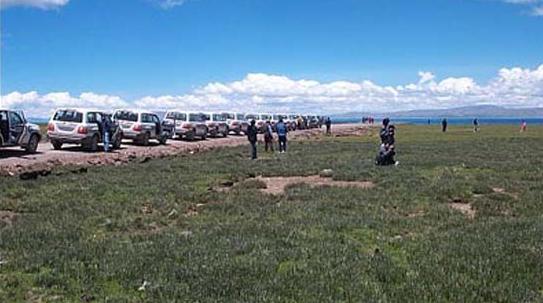 |
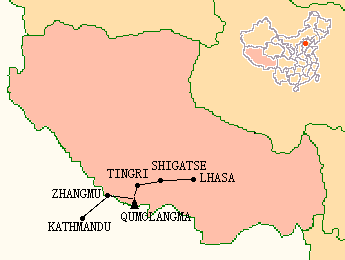
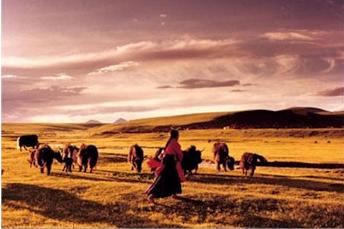
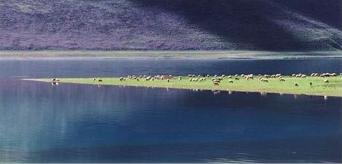
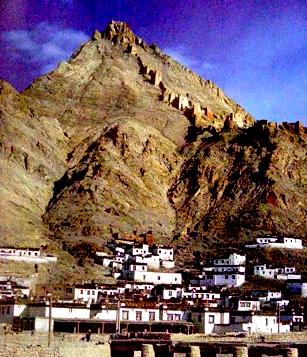
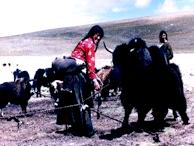 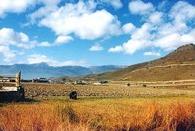
|

